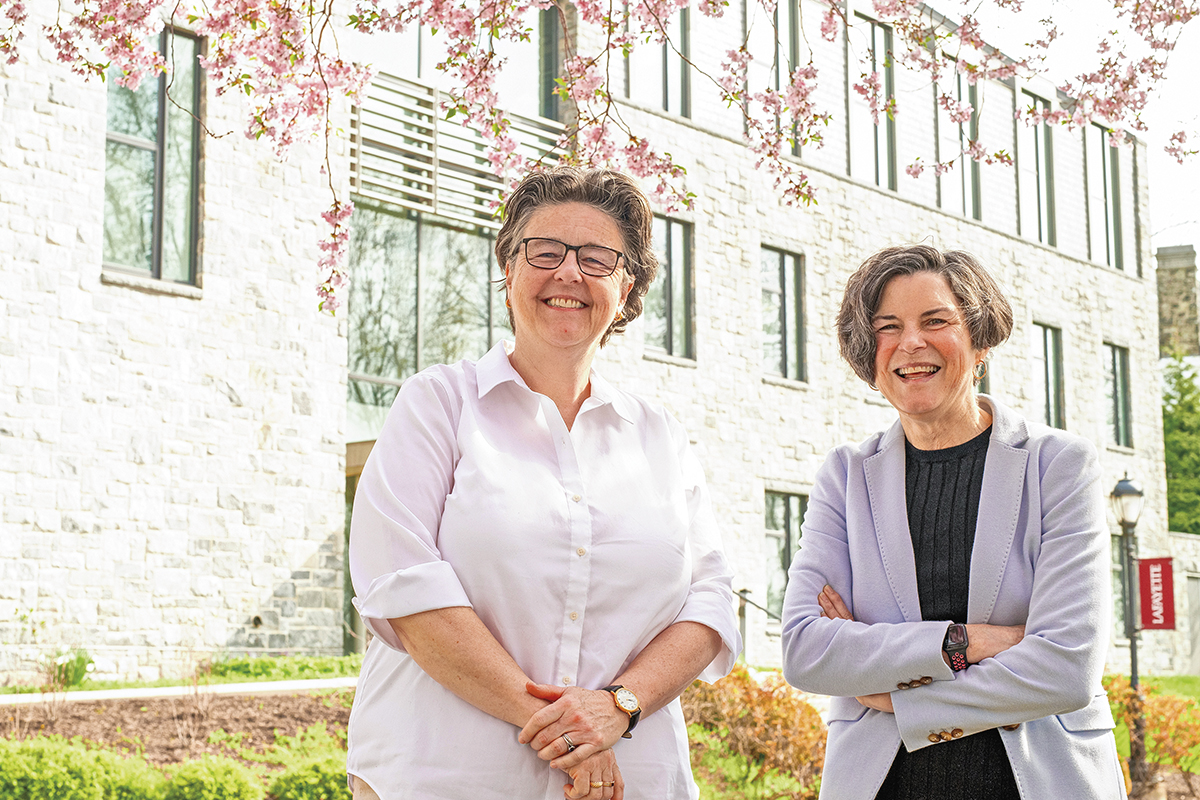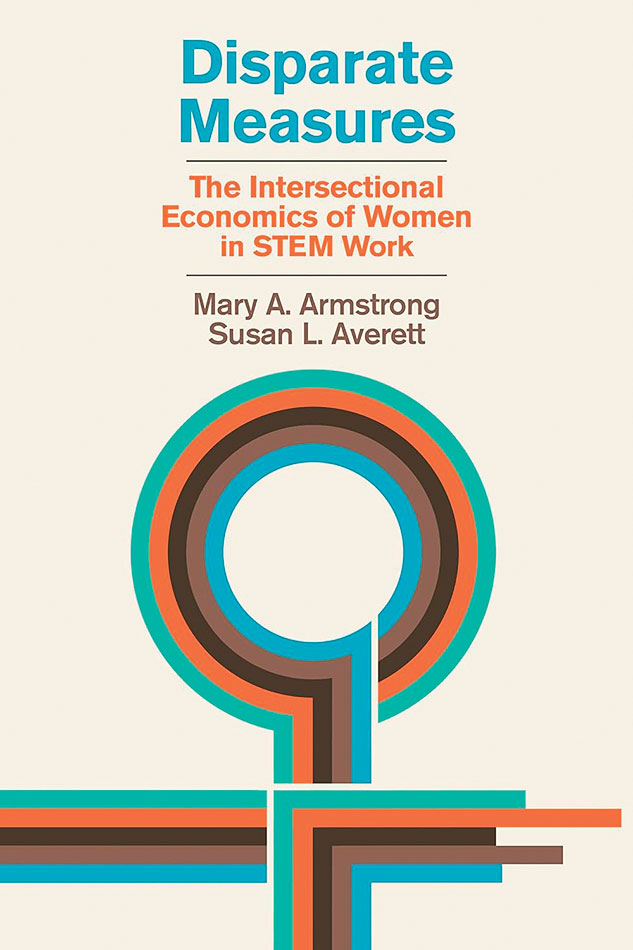Exploring the STEM gap
In new book, Profs. Armstrong and Averett examine economic inequities in STEM.

PHOTO OF MARY ARMSTRONG (LEFT) AND SUSAN AVERETT (RIGHT) BY ADAM ATKINSON
After their first encounters serving together on a faculty advisory committee, Mary Armstrong and Susan Averett sensed that a professional collaboration would be inevitable.
“Susan has generously served on the Women’s, Gender and Sexuality Studies Advisory Committee for many years. Our shared time on the committee got us talking about the possibility of working together,” says Armstrong, Charles A. Dana Professor of Women’s, Gender and Sexuality Studies and English.

In 2016, when an editor at MIT Press approached Averett, whose research includes gender and the economy, about her interest in developing a book project, her writing and research partner was obvious. “I immediately talked to Mary,” recalls Averett, Charles A. Dana Professor of Economics. “I had a similar interest in gender studies, and Mary had done a lot of work on STEM and was an expert already. We decided that maybe we could make something out of this.”
For their first co-authored book, Armstrong and Averett pitched the topic of economic inequities among diverse women in STEM fields, an area they had been talking about since 2016. It was accepted immediately by MIT Press. “We plugged away at it regularly and worked on it weekly for years,” Averett says. Published in April, Disparate Measures: The Intersectional Economics of Women in STEM Work shows that diverse women in STEM fields, despite the promise and expectation of economic abundance, do not fare as well economically as white men in the same professions. “These women deserve a book that says, ‘We see you,’” Armstrong says. For their research, Armstrong and Averett turned to the Census Bureau’s American Community Survey, a rich resource of vital information on the U.S. and its people.
In their book, they present four in-depth case studies examining Black women; American Indian and Alaska Native women; Asian and Pacific Islander women; and Hispanic women. Also included are four case studies of women who are frequently bypassed by the STEM inclusivity literature: foreign-born women, women with disabilities, queer women, and mothers.
Wage gaps for women in STEM professions, especially high-paying STEM professions, can be 45% or more compared to white men in the same fields, according to their research. “The American Community Survey forms the backbone of our data analysis, because it’s very large,” Averett says. “It had really good information on occupation and earnings, which is key to this project. We needed a data set that was really robust, because some of the groups are small.”
When Armstrong and Averett started to develop their project, one of the things they talked about was wage gaps. “We asked ourselves what it is about STEM, particularly, that makes that wage gap important,” Armstrong says, explaining they didn’t want to just crunch data that anybody could deliver. “We wanted it in a framework that really challenged people to think about the way we laud STEM careers as a source of equity and social mobility for diverse women. But the framework reveals that we’re pulling a shell game on people, promising them STEM as the road to glory.”
Through their research, Armstrong and Averett also found that women are not represented in higher-paying STEM fields like engineering. “For example, there tend to be more women in the natural sciences, but they’re not the higher-paying STEM jobs,” Averett observes. “We uncovered so much about leadership, too. About 10% of STEM jobs are management and leadership jobs. They are by far the highest paid, and they are dominated by white men.”
The authors present Disparate Measures not as an academic textbook but rather a resource for Ph.D. students, policymakers, and STEM professionals who want to level the playing field. Their final chapter offers ways to think differently about STEM equity and to reexamine the promises made around STEM as a source of economic success for everyone or equity for everyone. “If you want to solve a problem, hope lies in understanding the problem better,” Armstrong offers. “And while it may be somewhat discouraging to see the depth and extent of the problem, the better you see it, the more hope there is for addressing it.”



